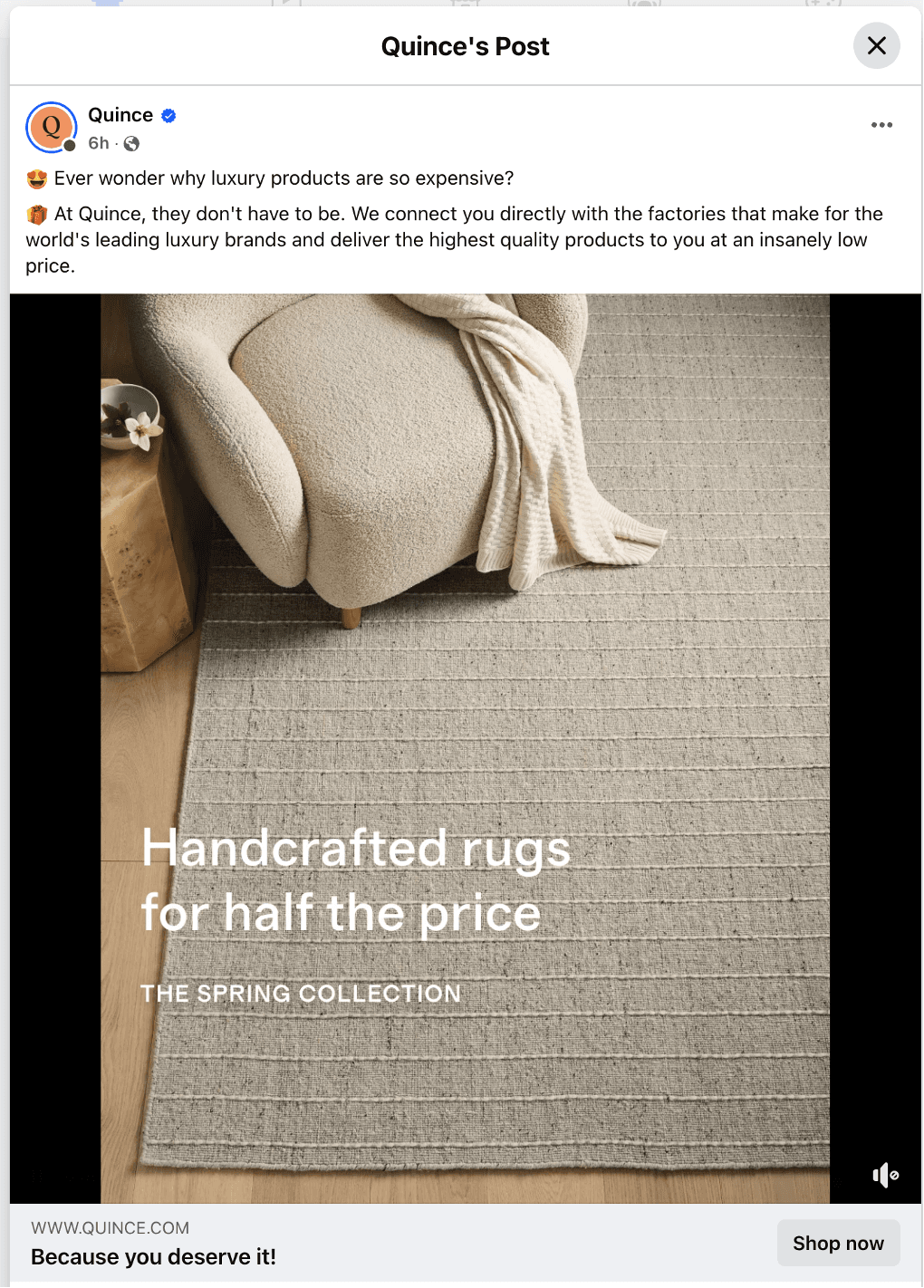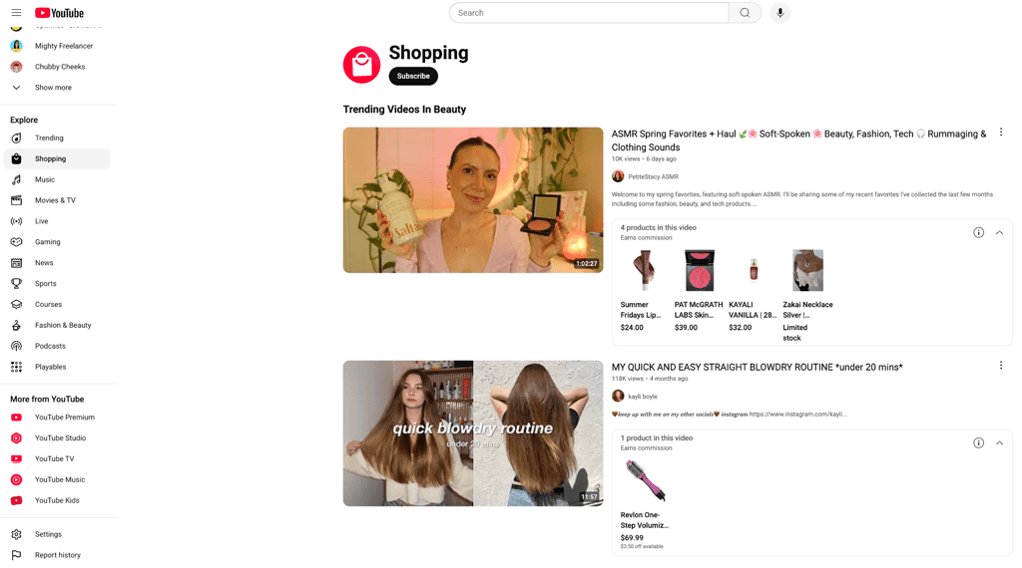TikTok Ban Status Got You Down? 5 Social Selling Options Beyond TikTok Shop
11 min
- Jana Gentry Smith

If you feel the TikTok ban is more “will they or won’t they?” than Ross and Rachel’s rollercoaster of a relationship in the classic TV series Friends, you’re not alone. The U.S. government has granted multiple deadline extensions on TikTok bans, prolonging business uncertainty. On April 4, U.S. President Donald Trump again granted a second 75-day extension to the pause on the TikTok ban.
In the latest episode of TikTok Shop, a reported deal was in the works. According to reporting by Reuters, China would not approve the ByteDance deal following the 54% tariff Trump imposed on Chinese goods imported into the US. Now, TikTok Shop sellers continue to face a stark reality: a potential TikTok shutdown could cost small businesses over $1 billion in revenue and creators $300 million in earnings.
The stakes are high. The future is uncertain. But your business doesn't have to be vulnerable if you follow this roadmap to diversifying social commerce and thriving beyond the TikTok Shop marketplace.
Social commerce is booming, but changes are inevitable
Social commerce is revolutionizing online shopping. Social media sites and apps embed purchasing directly into social media experiences, allowing consumers to discover and buy products without leaving their favorite networks.
The market is booming. McKinsey projects the U.S. social commerce market will grow from $37 billion in 2021 to $80 billion by 2025. TikTok Shop alone was expected to reach $17.5 billion in sales by the end of 2024.
The potential TikTok ban is something Jeanel Alvarado, Founder & CEO of RETAILBOSS, has been following closely. “Companies that have invested heavily in TikTok's ecosystem stand to lose their entire social commerce infrastructure on the platform—creator partnerships, audience connections, and the proprietary data that powers their targeting,” Jeanel said. “Most concerningis the potential overnight evaporation of revenue streams some retailers have grown to depend on.”
TikTok Shop's unique value was its ability to integrate commerce with short-form, trend-driven video content. It allowed brands to embed product links in videos and live streams, capitalizing on viral marketing and high engagement. Many retailers have seen a lot of success.
But that success comes at a cost. Jeanel describes how one beauty brand executive she recently spoke with estimated that TikTok Shop accounts for 23% of their direct-to-consumer sales.
And that beauty brand isn’t an outlier. Many social commerce retailers face replacing hefty percentages of profits on short notice.
Strategize your next social commerce move
TikTok uncertainty demands a strategic pivot. You have to consider transferring inventory, content, and even your TikTok Shop shipping strategy.
How do the other social selling options compare? Some social applications will accelerate your growth, while others might slow you down.
The solution? Jeanel recommends diversifying your social commerce portfolios. “The most resilient retailers operate on a ‘no single point of failure' principle. This means maintaining an active selling presence across at least three systems, with no single channel exceeding 40% of social commerce revenue.”
If you’re considering expanding your organization’s social commerce presence, we've identified five critical criteria for evaluating social commerce options:
Organic reach
Ease of selling
Checkout integration
Content discoverability
Audience demographic
So, where should you go next? We analyzed the top alternatives to help you find the right fit and avoid costly missteps.
Alternative | Best for | Unique Strength | Migration readiness | Organic reach | Ease of selling | Check out integration | Discover- ability |
|---|---|---|---|---|---|---|---|
Instagram Shop | Lifestyle brands | Influencer-driven | 9/10 | High | Easy | Meta Pay Shopify | Excellent through Reels |
Facebook Shop | Diverse products | Massive reach | 7/10 | Moderate to high | Very easy | Meta Pay Shopify | High through targeted ads |
Youtube Shopping | Product demos | Video commerce | 8/10 | Strong | Moderate | Shopify | Excellent |
Pinterest Shopping | Planning-focused | Inspiration shopping | 6/10 | Moderate | Moderate | External Link | High |
Flip | Youth-focused brands visuals | Monetized user reviews and referrals | 7/10 | Excellent | Straight-forward | Strong appeal to millennials and Gen Z | High through video reviews |
Top 5 alternatives to TikTok Shop
1. Instagram Shop: Closest TikTok ecosystem

Photo Source: Instagram Reels
Instagram Shop offers the most seamless transition for TikTok sellers, maintaining a similar content style and audience engagement model. Instagram reports that 79% of users surveyed buy products or services after watching Reels. Also, its influencer infrastructure provides an immediate pathway for existing content creators.
It’s important to note that Instagram and Facebook share Reels, and 138.9 million Reels are viewed per minute. If you intend to set up an Instagram Shop, it also makes a strong case for setting up a presence on Facebook.
Setting up Instagram shopping for ecommerce is especially efficient if you’re also opening a Facebook Shop. Since they’re both Meta Shops, you can set up both shops at once and benefit from a unified online presence.
Best for: Lifestyle, fashion, and beauty brands seeking influencer-driven commerce
Performance snapshot:
Organic reach: High
Ease of selling: Easy
Audience Demographic: 18-34 age range
Checkout integration: Seamless with Meta Pay
Content discoverability: Excellent through Reels
Jeanel’s take:
“Instagram remains the most natural transition platform. The shopping experience most closely resembles TikTok's, reducing friction for both sellers and consumers during migration.”
2. Facebook Shop: The demographic powerhouse

Photo Source: Facebook
Facebook Shops turns scrolling through social networks into a scroll-and-shop session. Sellers can reach diverse audiences, and once you set up a Facebook Shop, you can sell the same products on Instagram Shop and Facebook Marketplace.
Facebook’s targeting capabilities help you segment customers based on interests, behaviors, and demographics. Accurate targeting is essential for businesses transitioning from TikTok's algorithmic approach and is likely why 86% of the world’s marketers use Facebook.
Facebook Shop rolled out in 2020, and Facebook has had an even longer social run. People who have never purchased anything through social media may be more likely to trust Facebook over other, newer names they aren’t as familiar with.
Since the rollout, Meta has introduced tools like Commerce Manager, ads, and messaging. Its mature ecosystem provides a comprehensive business tool.
Best for: Small to medium businesses seeking broad demographic reach
Performance snapshot:
Organic reach: Moderate to high
Ease of selling: Very easy
Audience Demographic: Broad (25-55 age range)
Checkout integration: Seamless with Meta Pay
Content discoverability: Strong through targeted ads
Jeanel’s take:
“It's easy to get started with zero experience. Shopify, WooCommerce, OpenCart, and GoDaddy offer integrations with Facebook Shops, simplifying the import of product catalogs to sell on social media.
The application reduces friction in the buying process by allowing customers to browse and purchase products without leaving Facebook. It also personalizes product feeds based on user interests, increasing the likelihood of reaching ideal customers.”
3. YouTube Shopping: Video commerce potential

Source: YouTube Shopping
Whether you’re visiting to get the dopamine hit of baby animal videos, a laugh from dog bloopers, a beauty tutorial to master eyeliner, unboxing videos of a product you’re considering, or house DIY so you can fix that clogged drain, YouTube seems to have something for everyone. More than just videos, YouTube offers a storytelling approach to ecommerce branding that goes beyond quick transactions.
Its video-first model allows for deeper product exploration and community building, resulting in 3.47 million videos watched per minute. It’s the second most visited website in the world, just behind Google. Your potential customers are there, and with YouTube Shopping, you can connect your store directly to your YouTube channel so they can buy directly from the video.
Best for: Brands with compelling video content and tutorial-based products
Performance snapshot:
Organic reach: Strong (especially with the Shorts algorithm)
Ease of selling: Moderate (requires channel setup)
Audience Demographic: 25-34 age range
Checkout integration: Shopify-enabled
Content discoverability: Excellent through video search
Jeanel’s take:
“YouTube Shorts deserves serious consideration as well. It has impressive viewership growth, and it's projected to invest in more shopping features for creators.”
4. Pinterest Shopping: Discovery-driven sales

Photo Source: Pinterest
Turn Pinterest users' vision boards into sales opportunities with a Pinterest Shopping setup. It’s a hub where users expect to be inspired.
Want to renovate your kitchen? Search kitchens and start scrolling. Need the perfect outfit for brunch? Fashion ideas are abundant. Pinterest users daydream about purchases before they even find your items.
Integrating your catalog with Rich Pins and product tags makes your merchandise discoverable when customers are in a prime buying mindset. The connection between inspiration and purchase transforms browsers into buyers, capturing high-intent customers who are already in the mood to buy.
Best for: Home decor, fashion, and design-focused brands with visually stunning products
Performance snapshot:
Organic reach: Moderate
Ease of selling: Moderate
Audience demographics: 30-50 age range, affluent demographic
Checkout integration: External link-based
Content discoverability: High through visual search
Jeanel’s take:
”Pinterest is emerging as a surprisingly strong contender, particularly for home goods, fashion, and lifestyle products. Its visual discovery engine and high purchase intent make it valuable despite its smaller user base.”
5. Flip: An emerging social selling option

Photo Source: Flip
The big names aren’t the only way to go. Like with the stock market, adding some lesser-known but emerging options into your social solution portfolio is not a bad idea.
One of the newest examples of social selling, Flip, turns shopping into a content creation playground, allowing users to earn money through product reviews and referrals. It's a hybrid of social media and ecommerce that rewards engagement. Popular brands like Kitchenaid, JBL, Samsung, and Moroccanoil use it in their social commerce strategy. Over 5,000 brands, like these, use Flip to reach customers from over 5 million users, 75% of whom are Millennials and Gen Z.
Best for: Content creators and brands seeking interactive shopping experiences
Performance snapshot:
Organic reach: Excellent
Ease of selling: Straightforward
Audience demographics: Strong appeal to millennials and Gen Z
Checkout integration: Seamless in-app purchasing
Content discoverability: High through video reviews
When you mix and match these options, you’ll have a diverse presence that prevents an ecommerce emergency when one undergoes major changes that threaten your bottom line (like a government ban). Of the top social shopping sites covered, Instagram Shopping emerges as the closest ecosystem to TikTok, offering seamless video content transition and a robust influencer infrastructure.
Keep in mind that expanding your social commerce footprint makes synchronizing inventory management across multiple selling channels more complex. Let's explore how to maintain control of your inventory as you diversify.
Overcome common social commerce transition challenges
If you're moving from the TikTok Shop app to other sales channels, here are a few things to look out for during your ecommerce launches besides simply following your TikTok Shop buyers:
Give your metrics and timelines a chance to settle
Each social media option tracks results in its own way. Analytics can take 2–3 weeks to level out after switching. Use the same Urchin Tracking Module (UTM) tags across applications to compare results more easily.
Also, expect changes in payment timelines. Some process payments faster than others. These differences impact your cash flow during the switch.
Adjust existing and future content for each social site
What works on TikTok might not work somewhere else. Plan to tweak your videos or images for each application while keeping your brand’s style and message the same. Clear content guidelines for each channel help keep things on track.
Watch for rule changes
Each social solution has its own rules for selling and advertising. Take time to understand what’s allowed before you start. Knowing the ins and outs of social selling on that site or app helps you avoid problems with product listings or content that worked fine on TikTok but might not meet other applications’ rules.
A centralized multichannel ecommerce shipping software like Veeqo, which includes inventory, warehouse, and shipping management software along with a profit analyzer for analytics and forecasting, can eliminate many of these headaches by reducing errors, saving time, and creating a smoother experience for your team and customers.
Manage your inventory strategically as you diversify
Expanding across multiple social selling solutions isn't just about setting up shop—it's about managing your inventory with precision and strategy, especially when you’re expanding and there’s more potential for chaos. It’s a transition that calls for smart, flexible inventory management.
A social commerce strategy isn’t simply listing products everywhere you can. It requires a strong plan for inventory control that keeps your profits where you want them and your customers satisfied.
As your brand expands its digital footprint, how you manage your stock becomes more critical to your overall success. Consider the following inventory management tips as you’re updating your social commerce plan and expanding to other options:
Synchronize stock levels across all your stores in real-time
Use inventory management software that updates automatically when any channel makes a sale. Inventory accuracy prevents embarrassing stockouts and customer disappointment.
Clear extra inventory through targeted promotions
Use channel-specific data to pinpoint where certain products perform best. Then, create limited-time offers in your other stores where similar items have historically sold well. It turns the potential dead stock into revenue opportunities.
Test product batches on different social applications before full-scale rollout
New social commerce shops don’t have past sales data you can rely on. To avoid allocating too much product at first, start with just 15–20% of your inventory. Starting small gives you room to test without risking too much.
Each marketplace has its unique audience demographics. A product underperforming on your ecommerce website might go viral on Instagram Shopping.
Make Veeqo your inventory command center
Social commerce is much less stressful when you have top-tier software that keeps you and your team organized. For example, Veeqo is a lifeline for companies transitioning to multichannel social selling. Its omnichannel order management software helps solve the brainteaser of inventory, warehouse, and shipping management. Using Veeqo, you can:
View your entire sales ecosystem from a centralized commerce hub
Prevent overselling with multichannel inventory synchronization
Track stock levels in real-time across all marketplaces
Streamline fulfillment with automated order routing
Get the best shipping rates
Think of your inventory as a living, breathing ecosystem. Flexibility and real-time insights are your greatest assets when navigating multiple sales channels. Regularly analyze cross-channel performance data to optimize your inventory distribution strategy and maximize profitability.
Secure your social ecommerce future beyond TikTok Shop
The potential TikTok ban might have you reaching for antacids or aspirin. But you could also look at it as an invitation to innovate. Our exploration of alternative social selling options reveals a diverse landscape of opportunities.
From Instagram's influencer-driven ecosystem to YouTube's video commerce potential, Facebook's massive reach to Pinterest's discovery-driven model, sellers have more options than ever. Now is the time to:
Start testing alternative applications
Build audiences across multiple channels
Remain agile and data-driven in your approach
Create a centralized hub for your active social commerce stores
Today's uncertainty is tomorrow's opportunity. Brands that move quickly, adapt intelligently, and stay flexible will not just survive. They'll thrive. And they’ll be positioned for long-term success.
Use Veeqo to sync inventory across your social commerce stores.





